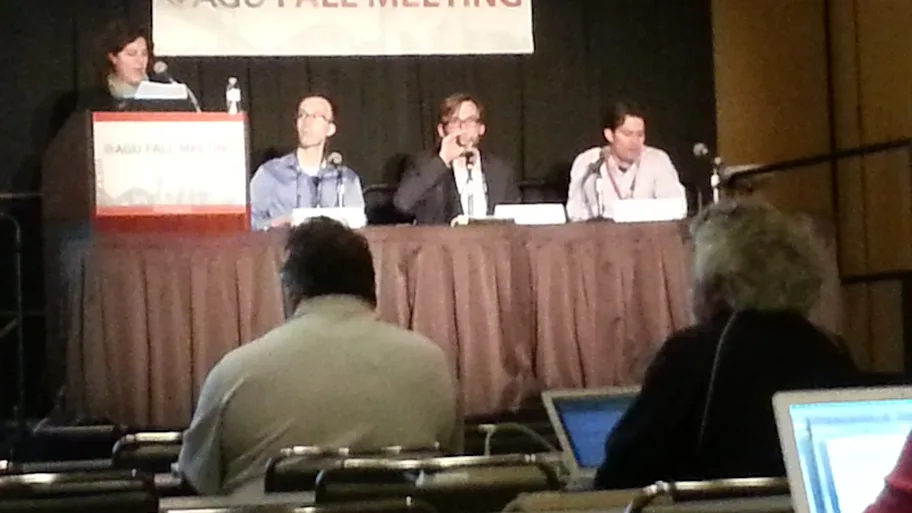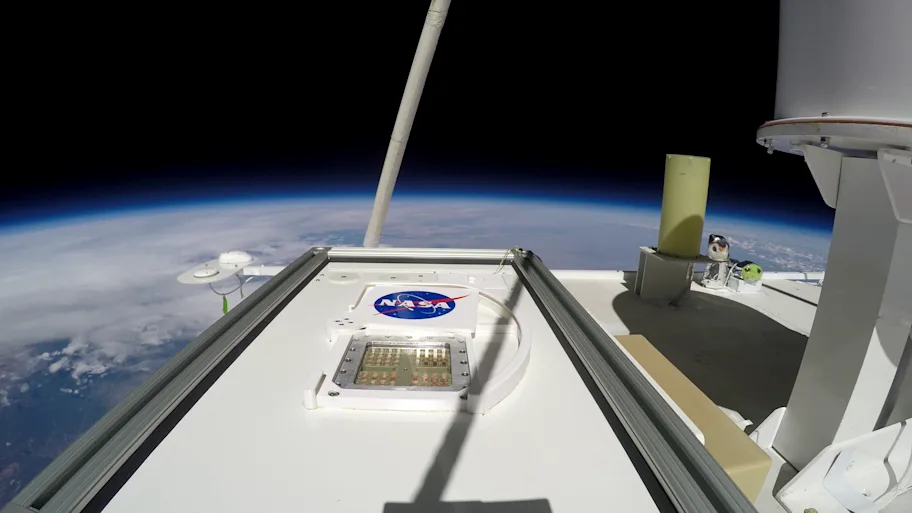
- Science news
- Life sciences
- News from #AGU15: NASA’s LADEE mission
News from #AGU15: NASA’s LADEE mission
Our colleague Laura Smart, Journal Coordinator in our Physical Sciences and Engineering program, represented Frontiers at the AGU (American Geophysical Union) Fall Meeting in San Francisco from December 14 – 18,2015. Besides meeting with many Frontiers editors and authors, she also attended several scientific press conferences.
Here, she gives her summary of an exciting talk by on NASA’s LADEE mission. In this press conference, scientists presented new findings on the moon’s tenuous exosphere, which ultimately should provide insight into the soil composition and processes in many atmospheres in our solar system.
New findings from NASA’s LADEE mission at AGU
Thursday 17th December
Anthony Colaprete, Planetary atmospheric scientist and LADEE Ultraviolet-visible Spectrometer (UVS) Principal Investigator, NASA Ames Research Center, Moffett Field, California, USA
Richard Elphic, LADEE Project Scientist, NASA Ames Research Center, Moffett Field, California, USA
Menelaos Sarantos, Associate Research Scientist, University of Maryland, Baltimore County, Baltimore, Maryland, USA
Thomas H. Morgan, Project Manager, NASA Planetary Data System, Goddard Space Flight Center, Greenbelt, Maryland, USA

Image converted using ifftoany
Artist’s concept of LADEE spacecraft in lunar orbit. Image credit: NASA Ames
Anthony Colaprete spoke first and explained what observations NASA’S Lunar Atmosphere and Dust Environment Explorer (LADEE) mission made. He highlighted that the observations taken by LADEE’s Ultraviolet Spectrometer (UVS) every 12 h over a period of five months were measured from a distance of between 5-50 km from the moon’s surface, giving the first clear and unambiguous evidence for how meteor streams alter the composition of the exosphere. He also highlighted that measurements focused on monitoring the change of concentration of sodium and potassium.
Thomas Morgan then provided more information about the history of the LADEE mission, which was launched in 2013. He explained that because sodium emits light in the yellow range of the visible light spectrum it can even be observed from earth. Sodium consistently emits two lines of light which can be measured and used to calculate concentration in the exosphere of the moon. Knowing fluctuations in concentration then allows conclusions to be drawn regarding processes on the moon’s surface. He indicated that sodium concentration in the exosphere is affected by the release of sodium and potassium through meteoritic bombardment, Photon Stimulated Desorption (PSD) and sputtering.
Richard Elphic continued to describe how sodium is observed to behave according to the LADEE mission and to explain PSD and sputtering on the moon’s surface. In the case of photon stimulated desorption, a photon liberates a sodium atom triggering a ballistic hop to another area of the surface. In the case of sputtering, interaction of a proton with a sodium atom causes the sodium to be released from the surface and sometimes escape.
He highlighted that understanding these processes is important because like the moon, Mercury, Europa, Pluto, large asteroids, and in fact most bodies in the solar system, have surface body exospheres and therefore the results from LADEE can be used to gain an understanding of many bodies in our solar system. He also indicated that there would be further results later relating to information acquired about the composition of lunar exosphere of the, specifically the variation in water recorded.
Menelaos Sarantos finished by discussing modelling of sodium and potassium, as well as some of the key questions it is hoped to answer. What are the reasons for the monthly variations? What are the reasons for annual variation? Where do the sodium and potassium come from and where do they go? Modelling is beginning to provide answers and more results will follow.
A video of the full press conference can be found here.
More impressions by Frontiers’ team at AGU15 are here and here.






